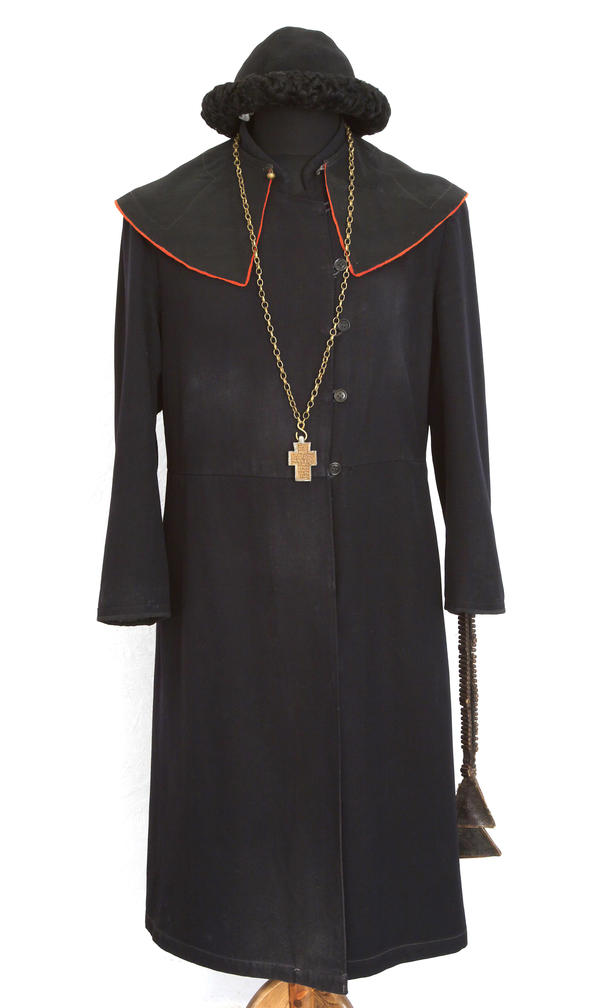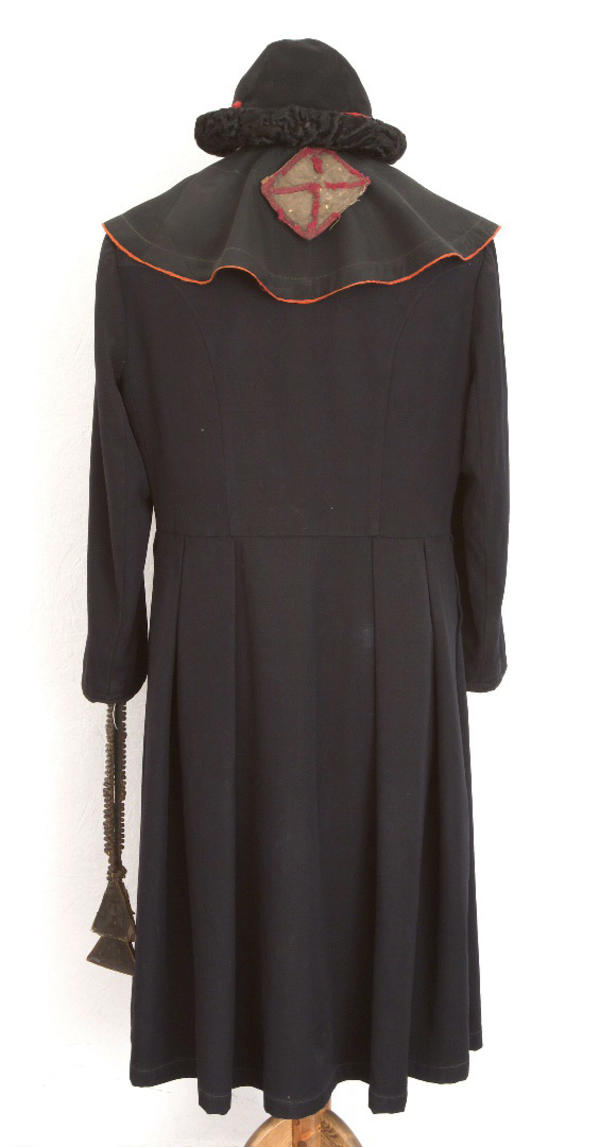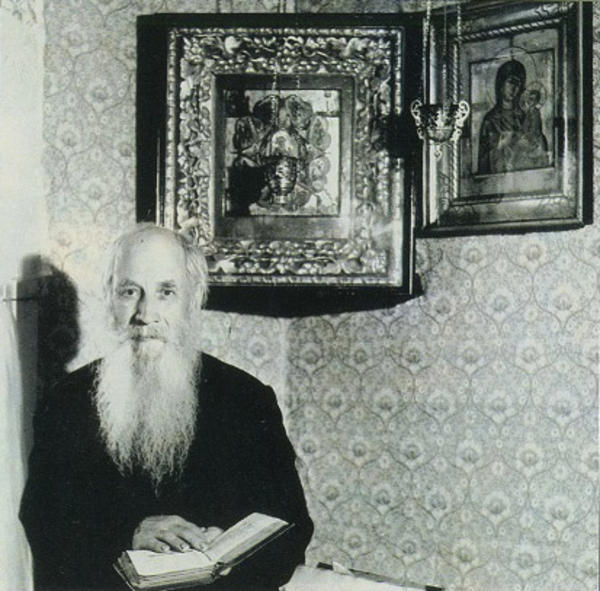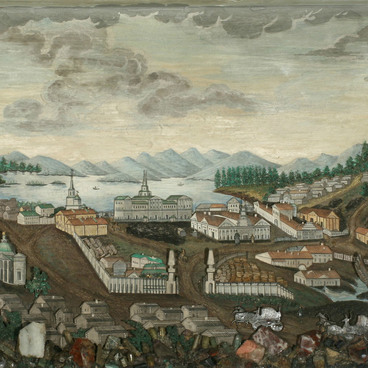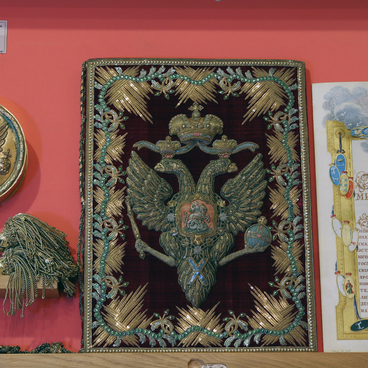A caftan was the main item of prayer clothing for the Old Believers. As to its cut, it looked like a traditional Russian costume.
Old Believers Men’s Caftan
Время создания
Mid-20th century
Размер
117 cm long
Техника
woolen fabric, hand-sewn
2
Открыть в приложении#8
Unknown Author
Old Believers Men’s Caftan
#9
#16
This woolen caftan was hand-sewn, and belonged to the Old Believer Isaac Baranov from the town of Nevyansk.
The caftan is double-breasted: four buttons are attached in a row on the left flap of the caftan, and the laces for buttoning are on the right flap.
#19
Old Believers Men’s Caftan. Back view.
#11
Old Believers’ caftans were plain, and usually dark in color. From the beginning of the 18th century, the Old Believers of the Urals regulated their prayer clothes and general appearance, down to slightest details. The seventh chapter of the 1723 Iryum Council resolutions says:
“Christians shall not wear foreign garments… neither shall they cut beard and mustache… Men shall cut some hair at the top of their heads, in order to remember and reflect sorrow, as the true faith is persecuted, and we have a seal of sorrow on our heads. Men shall pray wearing caftans.”
#13
For several centuries, Nevyansk was one of the largest centers of Old Believers culture in the Urals. Descendants and followers of people who did not accept Patriarch Nikon’s church reform in the middle of the 17th century still live there. Although the reform did not change the essence of the dogma, many Orthodox believers considered the new rules to be apostasy from the faith of their fathers and continued to follow old books and rituals. By decision of the church authorities, all adherents to the old canons were anathematized: they were excommunicated from the Orthodox Church. Soon, severe persecution began against the Old Believers
#18
The owner of the caftan I.M. Baranov (2nd in the second row) among the parishioners of the Old Believers Holy Cross Exaltation Chapel in Nevyansk.
#15
People escaped from persecution by families, and sometimes by entire villages. They moved to remote deserted places, on the outskirts of the Russian empire and even beyond. The history of numerous communities of Old Believers in the Urals started in the seventeenth century. At the time when mining plants were founded, the need for working hands was so great that their managers sometimes even protected the Old Believers from church authorities.
As Mamin-Sibiryak wrote in a historical essay about the city of Yekaterinburg in 1887: ‘All factory work in the Urals was set up by the hands of schismatics… after all, a dissenter is always sober and always at work…’ Old Believers strictly observed old customs in everyday life: they did not drink, smoke, or swear. Most of them were literate. They were hardworking and honest, had excellent professional skills and often became irreplaceable foremen and managers.
#17
The old Believer Isaac Baranov was born in 1905 and came from a family of peasants of the Byngovsky plant, which was located near the city of Nevyansk in the Sverdlovsk region. Isaac Baranov learned reading, writing and singing from a local old woman. During the collectivization in the 1930s, he moved to Nevyansk. By profession, Isaac Baranov was a singer of an ancient musical tradition, which was called hooked notation. Before his death in 1999, he donated his caftan to the workers of the Museum of History and Archeology of the Urals during their mission to the Nevyansk district where they studied historical folk artifacts.
The old Believer Isaac Baranov. 1990. Nevyansk.
#20
O.E. Kler Sverdlovsk Regional Ethnography Museum
читать дальшескрыть
00:00
00:00
1x
Old Believers Men’s Caftan
Время создания
Mid-20th century
Размер
117 cm long
Техника
woolen fabric, hand-sewn
2
Открыть в приложении
Поделиться

